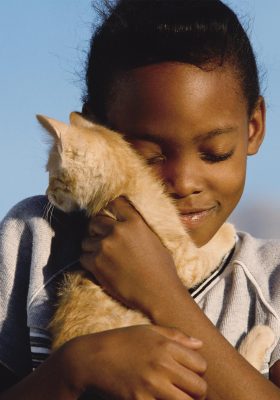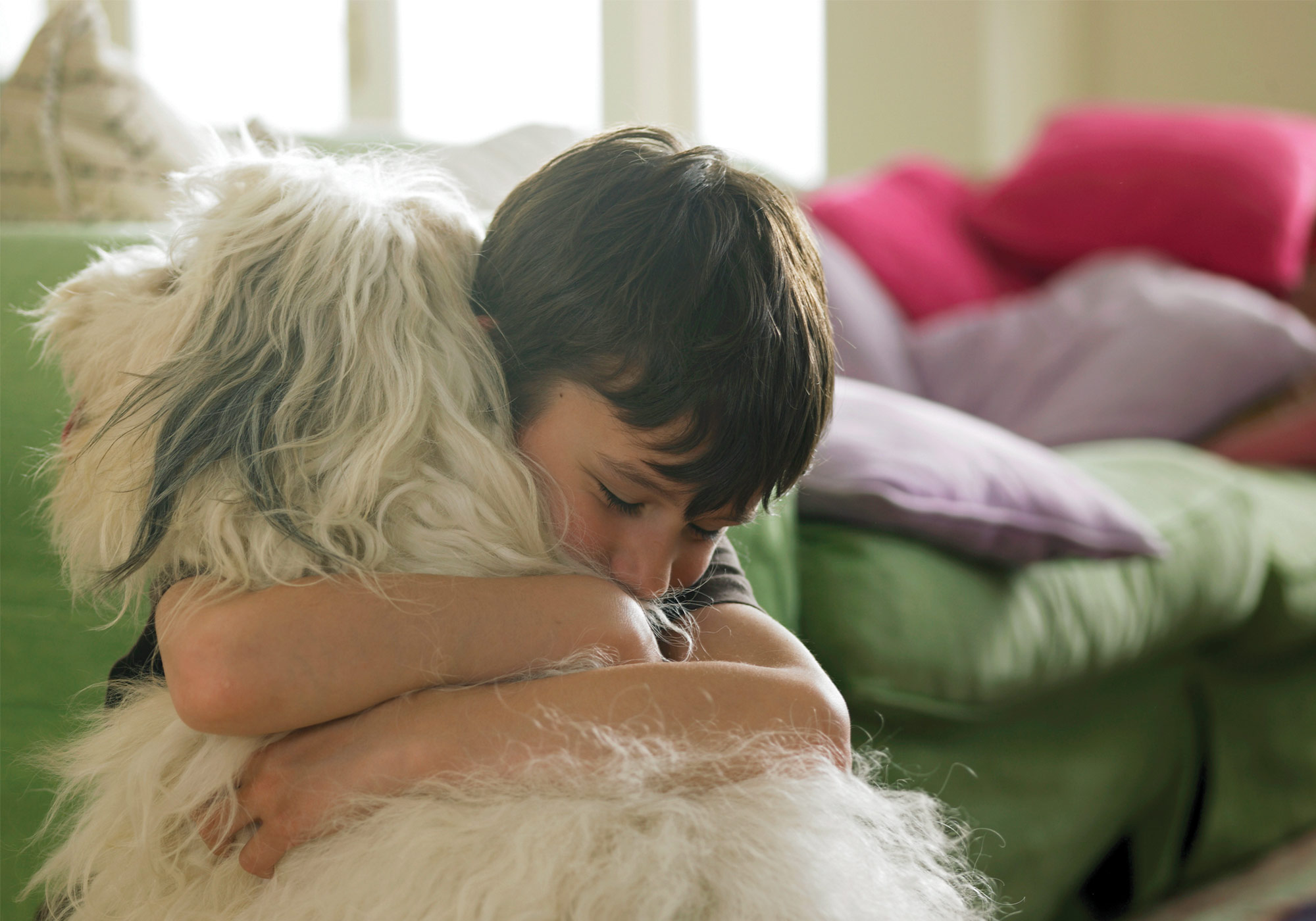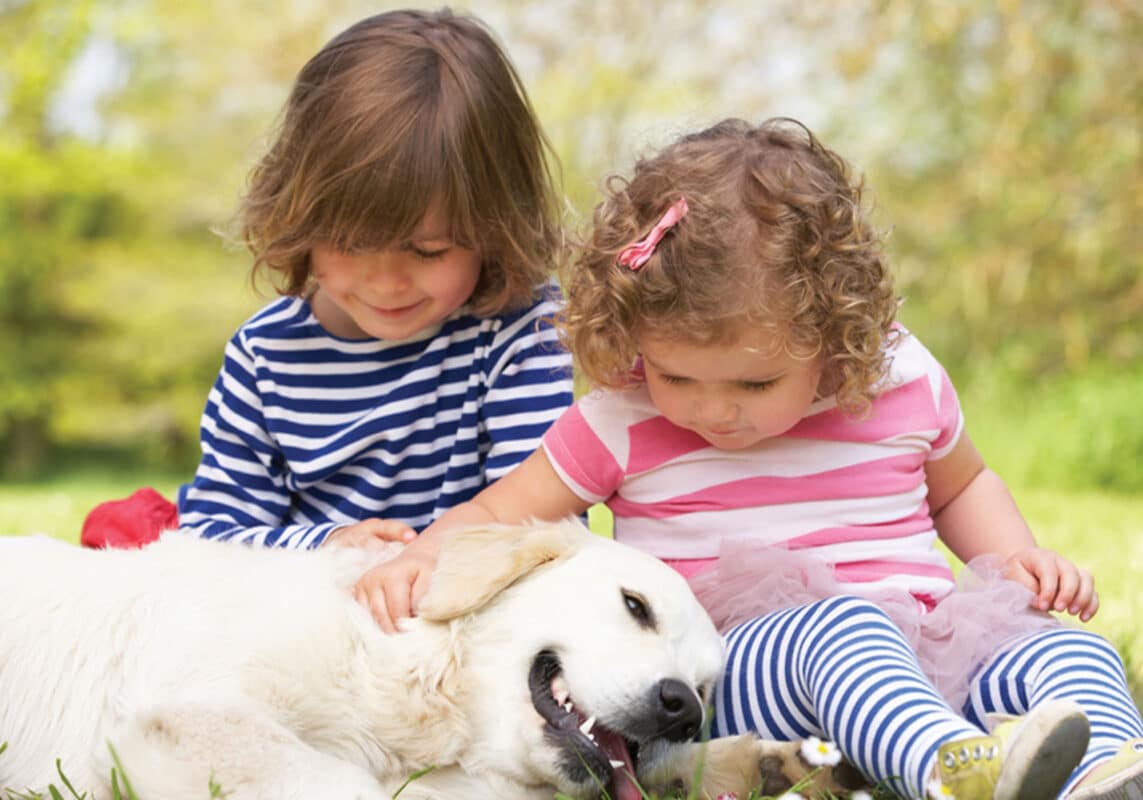WHAT CHILDREN CAN LEARN FROM AN ANIMAL COMPANION
The sheer joy of a bouncy dog greeting you upon your return home…the comfort of a cat nestled against your legs as you drift off to sleep…Pets can be great friends, and growing up with animal companions can be an incredibly rewarding experience for children. Here are some of The Benefits of Children Having A Pet.
The Benefits of Owning A Pet

Studies have proven that children who are raised with a family pet demonstrate a greater respect and understanding of nature, and are more compassionate as adults. In 2000, child psychologist Robert E. Bierer, PhD, conducted a study that explored the relationship between pets and children. The study looked at the effect current and previous pet ownership had on children ages 1 to 12 years old. Participants and researchers were surprised at the difference in empathy and self-esteem between children who owned a pet and those who did not.
Bierer’s conclusions support the growing body of evidence that shows pet ownership has a statistically significant impact on a child’s self-esteem and degree of sensitivity toward others. “Teachers, parents and other children have expectations for a child to fulfill. A pet has no such measures of success or failure; acceptance is total, which provides a greater sense of self-worth,” Bierer noted in his study.
Children who grow up with pets learn to read the subtle cues their pets give to indicate their feelings, which can help hone communication skills. “I know something is wrong when my dog’s tail is down,” says Caleb Winston. This 5-year-old’s awareness to his dog’s feelings shows how young children learn to pay attention to the emotions and feelings of the animals they cherish. They then apply this lesson to human interactions because they are more accustomed to watching for physical clues such as body posture and stride.
A relationship with an animal can also help a child develop empathy for others.
A relationship with an animal can also help a child develop empathy for others. Young children are often curious about the emotions their pets feel. As a child grows, this curiosity extends itself to the people in his life. “Animals offer an avenue for children to explore their curiosity,” Bart Sitzberger, MSW, explains. “For a child, curiosity can lead to hope and to greater engagement with the world around them,” he adds. Realizing how happy a dog is when he’s fed or watching a cat frisk about at the sight of a new toy helps children understand how environment and circumstances affect their pets, and in turn themselves.
Are Kids with Pets More Responsible?
If properly supervised by adults, a child can learn how to take care of another living being and take pleasure in keeping his pet healthy and happy. “Even our 2-year-old asks to help with the animals. He sees how the older kids feel it’s a privilege to be given the responsibility of caring for something,” says Angela King. Angela, her husband, Larry, and their five children enjoy raising horses, dogs and cats. “Sometimes we fight over whose turn it is to exercise them,” adds their oldest daughter, 12-year-old Missy.
How A Pet Builds Kids’ Confidence
Having a pet as a companion can also help build children’s confidence. Children go through life under constant evaluation—rated according to their behavior, grades and athletic performance. Pets, however, don’t have demanding or unrealistic expectations of their owners. They’re delighted that a child is with them regardless of how well the child is doing in school or on the sports field. “Having a pet has given our children the sense of unconditional acceptance,” says Patti Gordon. “A pet doesn’t judge or rate the kids. They just know our dog loves them for who they are,” adds her husband Jim.
Children who undergo traumatic experiences often cope better when they have a pet in whom they can confide. Whether it’s a fear of the dark, struggling to make friends in a new class or coping with overcoming a lisp, pets offer unconditional companionship. “Having an animal companion can make them feel a part of something,” says Sitzberger. Bierer’s study also indicated that 65 percent of children who grow up with pets have a greater capacity to help others cope with trauma.
Tips on Teaching Kids How to Care for Pets
It is important to set realistic expectations for your child’s participation with the pet. A very busy child may not place the same priority on feeding or walking a pet as a child who is home a great deal. However, experts such as Sitzberger agree that most children develop a strong bond to their pets regardless of their participation with the pet’s care and feedings. Sitzberger adds, “Parents need to understand that a lack of involvement does not represent a child’s level or depth of feelings for the pet.”
If brushing a dog’s teeth is important for his health, then naturally it is important for the child’s well being.”
Pets also help teach children about the importance of taking care of themselves. For instance, Norlin says he teaches the children of his patients why it is important to take care of a pet, brush his teeth and keep him clean. When they understand the importance, Norlin turns the focus on the children themselves. If brushing a dog’s teeth is important for his health, then naturally it is important for the child’s well being.
Determining Which Pet is Right for a Family
Dr. Leonard Norlin, DVM, suggests parents take into consideration their family’s energy level, the amount of time a pet will be left home alone, and the schedules and personalities of the entire family. “A child who expects a cat to take walks or a new puppy to lie quietly on her lap for hours may be saddened when the pet doesn’t act according to her ideals,” cautions Norlin. Understanding your family’s needs before adopting a pet will help ensure a positive outcome for all involved.
Once you’ve determined what kind of pet will best fit into your family, let your children help make the decision about which animal will share your home. Let them help choose the new pet and the name. Allow time to get used to the new dynamic, and enjoy getting to know your new family member!
Pets require a great deal of care and planning, not to mention the occasional middle-of-the-night walk or feeding, but watching your child’s eyes shine as she throws a ball for your galumphing dog or flicks a bit of yarn for your feisty cat, and knowing that this friendship is enriching the lives of all concerned, will make the effort feel worthwhile.

Considering adding a furry member to your family? There are many local adoption and rescue options! Check out the Charlottesville Albemarle SPCA, Green Dogs Unleashed, Animal Connections and Caring for Creatures as you begin the search for your family’s new best friend.
Looking to strengthen The Benefits of Children Having A Pet? See our list of Dog & Family-Friendly Fall Hiking Trails in Charlottesville. For a round-up of local pet professionals to help your family keep your furry family member safe and healthy, see our Food & Home section.
is a freelance writer, mother of an 11-year-old son, and companion of two Bichon Frise puppies.
YOU MIGHT LIKE



